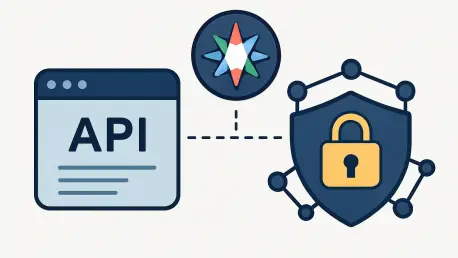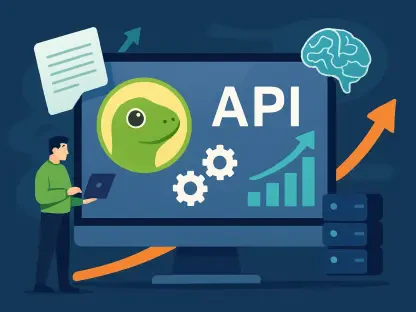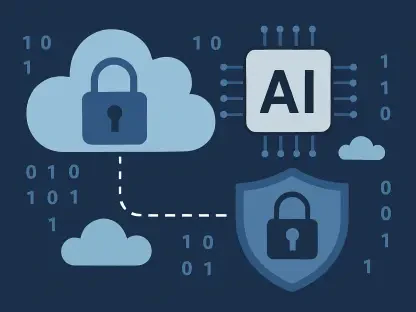In an era where digital transformation is accelerating at an unprecedented pace, securing APIs has become a critical priority for organizations aiming to protect sensitive data and ensure seamless interactions across platforms. With cyber threats evolving daily, implementing robust security measures for APIs is no longer optional but a necessity to safeguard business operations and maintain customer trust. This article delves into a powerful approach to API security by leveraging JSON Web Tokens (JWT) alongside MuleSoft’s capabilities on CloudHub 2.0. By focusing on a sample RAML-based project within the Anypoint Platform, readers will gain insights into applying essential policies like JWT Policy Enforcement, IP Whitelisting, and Rate Limiting. Additionally, the integration with third-party authentication providers such as Auth0 will be explored to secure specific API endpoints effectively. This comprehensive guide aims to equip developers and IT professionals with the knowledge to enhance API security, ensuring that data exchanges remain protected against unauthorized access and potential breaches.
1. Setting the Foundation for API Security
In the complex landscape of API management, establishing a secure environment begins with understanding the prerequisites and tools necessary for implementation. For those embarking on this journey with MuleSoft, having the right setup is crucial to ensure smooth policy enforcement. Anypoint Studio 7.21, compatible with Java 17 by default, serves as the primary development environment, alongside a mandatory Java 17 installation. An active Anypoint Platform account is required to access API Manager and deploy solutions to CloudHub 2.0. Additionally, tools like SOAPUI and Postman are indispensable for testing API endpoints, while Maven supports project builds and dependency management. These components collectively create a robust foundation for developers to design, test, and deploy secure APIs. Without meeting these prerequisites, implementing advanced security policies such as JWT enforcement could encounter significant hurdles, potentially compromising the integrity of the entire system.
Beyond the technical setup, a clear grasp of the learning resources available can significantly enhance the implementation process. A detailed video tutorial offers a complete walkthrough of the concepts, breaking down complex ideas into manageable steps for better comprehension. Furthermore, understanding the JWT authentication flow through provided diagrams can clarify how tokens are requested, validated, and utilized to secure API access. This visual and practical guidance is essential for those new to API security or MuleSoft’s ecosystem, as it bridges theoretical knowledge with real-world application. By leveraging these resources, developers can avoid common pitfalls during setup and ensure that policies like Rate Limiting and IP Whitelisting are applied correctly. This preparatory phase not only builds confidence but also sets the stage for a successful deployment, ensuring that security measures are both effective and sustainable in a production environment.
2. Understanding JWT Authentication Flow
The process of securing APIs with JWT begins with a structured authentication flow that ensures only authorized users gain access to resources. Initially, the client reaches out to an authentication provider to obtain a token by submitting critical details such as the client ID, client secret, and grant type. Once the token is acquired, it is used to call the designated resource server endpoint, effectively acting as a digital key to unlock protected data. This step is pivotal as it establishes the first layer of security by ensuring that only clients with valid credentials can proceed further. The seamless interaction between the client and the authentication provider is a cornerstone of JWT-based security, as it minimizes the risk of unauthorized access right from the initial request, setting a strong precedent for subsequent interactions.
Following token acquisition, the resource server plays a critical role in validating the token’s authenticity by communicating with the authentication provider. If the token passes verification, the server responds with a 200 OK status, granting access to the requested resources. However, if the token is deemed invalid or expired, an error response is returned, typically a 401 Unauthorized status, preventing access and alerting the client to the issue. This validation mechanism is essential for maintaining the integrity of API interactions, as it ensures that every request is thoroughly vetted before any data is exposed. By implementing such a rigorous authentication flow, organizations can significantly reduce the likelihood of security breaches, protecting sensitive information from falling into the wrong hands and maintaining trust in their digital ecosystems.
3. Defining Security with RAML Specifications
A key aspect of securing APIs involves defining security schemes through RAML files, which provide a structured blueprint for policy enforcement. The jwt-token.raml file outlines the JWT-based security setup, specifying how tokens are transmitted and validated during API calls. Similarly, oaut##.raml details the OAuth 2.0 security framework, mandating that clients include an access token in the Authorization header as “Bearer {token}” while supporting grant types like authorization_code and client_credentials. Additionally, basic-auth-details.xml establishes the Basic Authentication scheme, relying on a standard username and password combination passed in the Authorization header. These RAML definitions create a cohesive security architecture, ensuring that APIs are protected through multiple layers of authentication tailored to different use cases and threat models.
Beyond security schemes, RAML files also define critical data types that standardize API interactions. Files like Booking.raml and BookingInput.raml specify formats for hotel bookings, detailing required fields and validation rules to ensure data consistency. Similarly, Hotel.raml and HotelInput.raml outline hotel data structures for responses and requests, while ErrorResponse.raml standardizes error messaging for issues like authentication failures. These data type definitions are integral to API security, as they prevent malformed requests from compromising the system. By clearly delineating expected data formats and error handling, these RAML files reduce ambiguity, making it easier to enforce security policies and maintain a secure API environment across diverse endpoints and operations.
4. Deploying and Configuring on CloudHub 2.0
Once the API security schemes and data types are defined, the next critical phase involves deployment and configuration within CloudHub 2.0. Start by publishing the API specification to Anypoint Exchange, making it accessible for implementation. Locally, utilize the scaffolding option to set up the project, ensuring all components are aligned before moving to production. After thorough verification, deploy the project to CloudHub 2.0, confirming that it appears as running in the platform. This deployment process is vital, as it transitions the API from a development environment to a live setting where security policies are actively enforced, protecting real-world data and interactions from potential threats.
Configuration extends to integrating with third-party authentication providers for enhanced security. Log in or register with a provider like Auth0, navigate to the appropriate settings to obtain the JWKS URL, and incorporate it into the JWT policy configuration within API Manager. Retrieve the necessary token details and use them to access the API; a valid token yields the expected response, while an invalid one results in a 401 Unauthorized error. Additionally, straightforward policies like IP Allow List and Rate Limiting can be configured to further control traffic and access. This comprehensive setup ensures that the API remains secure against unauthorized access, leveraging both MuleSoft’s capabilities and external authentication mechanisms for a fortified defense strategy.
5. Reflecting on Enhanced API Protection
Looking back, the journey of securing APIs with JWT and MuleSoft on CloudHub 2.0 revealed a meticulous yet rewarding process that fortified digital assets against evolving threats. The structured approach of defining security through RAML files, coupled with a robust authentication flow, provided a solid barrier against unauthorized access. Deployment to CloudHub 2.0 marked a significant milestone, as it translated theoretical configurations into practical, real-time protections that safeguarded sensitive data. Each step, from setting prerequisites to integrating third-party providers, played a pivotal role in building a resilient API environment that could withstand sophisticated cyber risks.
As a forward-looking consideration, organizations should continuously monitor and update these security measures to adapt to new vulnerabilities and compliance requirements. Exploring additional policies or advanced authentication methods could further enhance protection. For those who found this guidance valuable, taking the next step might involve diving deeper into MuleSoft’s documentation or experimenting with custom policies tailored to specific needs. Staying proactive in API security ensures that systems remain robust, fostering trust and reliability in an increasingly interconnected digital landscape.









